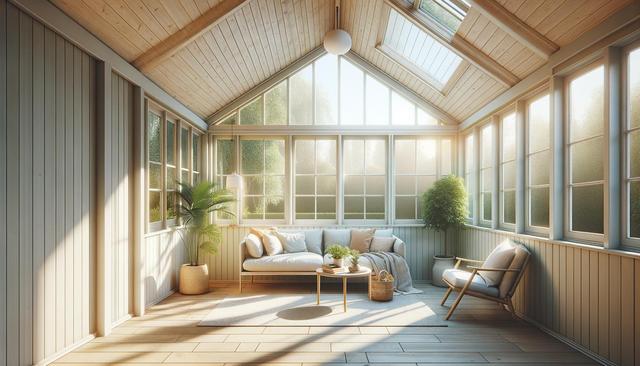Understanding the Appeal of Sunrooms
Sunrooms provide a unique way to enjoy the outdoors while remaining sheltered from the elements. Whether you’re looking to create a cozy reading nook, a bright home office, or a relaxing space for gatherings, a sunroom can serve multiple purposes. One of the main attractions is the natural light they invite into your home, which can improve mood and reduce the need for artificial lighting during the day. Additionally, sunrooms often increase the usable space in a home without the full cost of a traditional extension, making them particularly appealing for homeowners on a budget.
There are several types of sunrooms to consider, each with different price points:
- Three-season sunrooms: Typically not insulated, ideal for mild climates and most affordable.
- Four-season sunrooms: Fully insulated and usable year-round, but more costly.
- Screen rooms: Enclosed with mesh to keep out bugs, offering the lowest cost option.
Choosing the right type depends on your local weather, intended use, and budget. With a bit of research and proper planning, even homeowners with modest means can find an option that fits their needs.
Budget-Friendly Building Materials
Material choices play a large role in determining the overall cost of a sunroom. Opting for economical yet durable materials can help keep the project affordable while ensuring a quality result. For instance, aluminum framing is often less expensive than wood and requires less maintenance. Vinyl is another cost-effective option that’s resistant to rot and insects. When it comes to windows, double-pane glass offers a good balance between insulation and price, especially for three-season use.
Some affordable materials commonly used in sunroom construction include:
- Aluminum frames for light weight and low cost
- Vinyl panels for durability and weather resistance
- Polycarbonate roofing for cost-effective light diffusion
Recycled or reclaimed materials can also provide savings and an environmentally friendly alternative. Look for local salvage yards or online platforms where homeowners sell excess building supplies at a discount.
Design Tips to Maximize Value
Smart design choices can help you make the most of your investment in a sunroom. Keeping the layout simple and functional reduces construction complexity and costs. A rectangular or square footprint is easier and cheaper to build than a custom shape. Also, placing the sunroom on an existing patio or deck can eliminate the need for a new foundation, further cutting costs.
Here are several practical design tips for affordability:
- Use standardized sizes for windows and doors
- Choose a location with easy access to the existing structure
- Consider DIY kits for simplified installation
Additionally, orienting the sunroom to capture natural sunlight can help with passive heating, reducing energy use in cooler months. Minimal but well-placed furniture can also enhance usability without inflating your budget.
DIY vs. Professional Installation
One of the most impactful decisions regarding affordability is whether to build the sunroom yourself or hire professionals. DIY kits are widely available and can significantly lower costs, especially for screen rooms or three-season models. However, they require a certain level of skill, time, and tools. If you’re comfortable with basic construction tasks, a DIY sunroom project might be an achievable way to save money.
That said, professional installation has its benefits. It reduces the risk of errors, includes warranties, and can ensure compliance with local building codes. For complex builds like four-season rooms, hiring an experienced contractor may prove more cost-effective in the long run if it prevents costly mistakes.
When deciding between DIY and professional help, consider:
- Your experience with similar projects
- Time availability and physical ability
- Local permit and inspection requirements
In some cases, a hybrid approach—such as hiring professionals for foundation work and completing the rest yourself—can offer a balanced solution.
Finding Cost-Saving Opportunities
Beyond materials and labor, there are other strategies to make sunrooms more affordable. Shopping around for quotes from multiple contractors can reveal significant price differences. Seasonal discounts or off-peak scheduling may also provide opportunities for savings. Financing options, such as home improvement loans or payment plans, can make the cost more manageable without needing a large upfront investment.
Some additional ways to save on your sunroom project include:
- Taking advantage of tax credits or rebates for energy-efficient installations
- Purchasing materials during sales or clearance events
- Reusing existing furniture and decor
Additionally, planning ahead and avoiding last-minute changes can prevent scope creep and unexpected expenses. Creating a detailed budget and timeline helps ensure that your affordable sunroom remains within financial reach.
Conclusion: Affordable Comfort Within Reach
Adding a sunroom doesn’t have to be a luxury reserved for high-end homes. With the right materials, smart design, and careful planning, homeowners can create a beautiful, light-filled space that enhances daily living without stretching their finances. Whether you choose a simple screen room or a well-designed three-season space, affordability and comfort can go hand in hand—making your home more enjoyable year-round.








